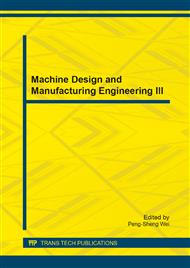p.616
p.620
p.625
p.629
p.633
p.641
p.647
p.651
p.657
Research on the Fault Characteristic Extraction of Hydropower Units Based on Hilbert-Huang Transform
Abstract:
In order to effectively extract nonstationary and nonlinear fault signature of hydropower units’ signals, a new method, based on Hilbert–Huang transform (HHT), is proposed. This method is used to carry out EMD (Empirical Mode Decomposition) analysis and Hilbert transform of signals firstly and then extract Hilbert spectrum to provide a basis for signal feature extraction. The vibration signal of upper brackets in hydropower units has been put forward with experimental analysis. The results suggest that the EMD can decompose vibration components in different frequency domain, which has intuitive physical meaning. Moreover, Hilbert spectrum also has a good resolution in time domain and frequency domain. Thus, HHT can be used to depict the fault signals effectively and lay the foundation of the fault pattern recognition.
Info:
Periodical:
Pages:
633-637
Citation:
Online since:
July 2014
Authors:
Price:
Сopyright:
© 2014 Trans Tech Publications Ltd. All Rights Reserved
Share:
Citation:


